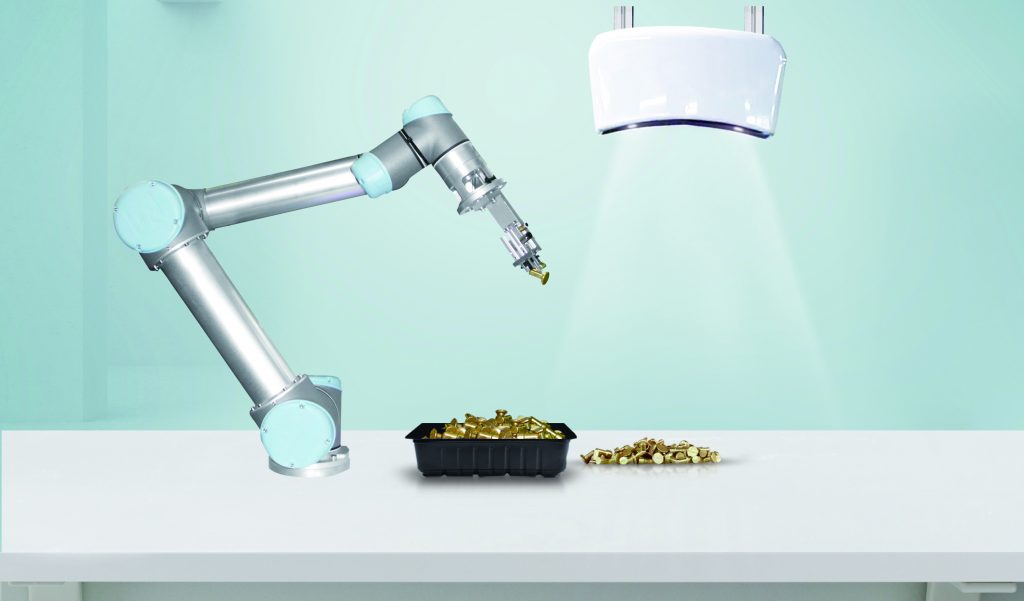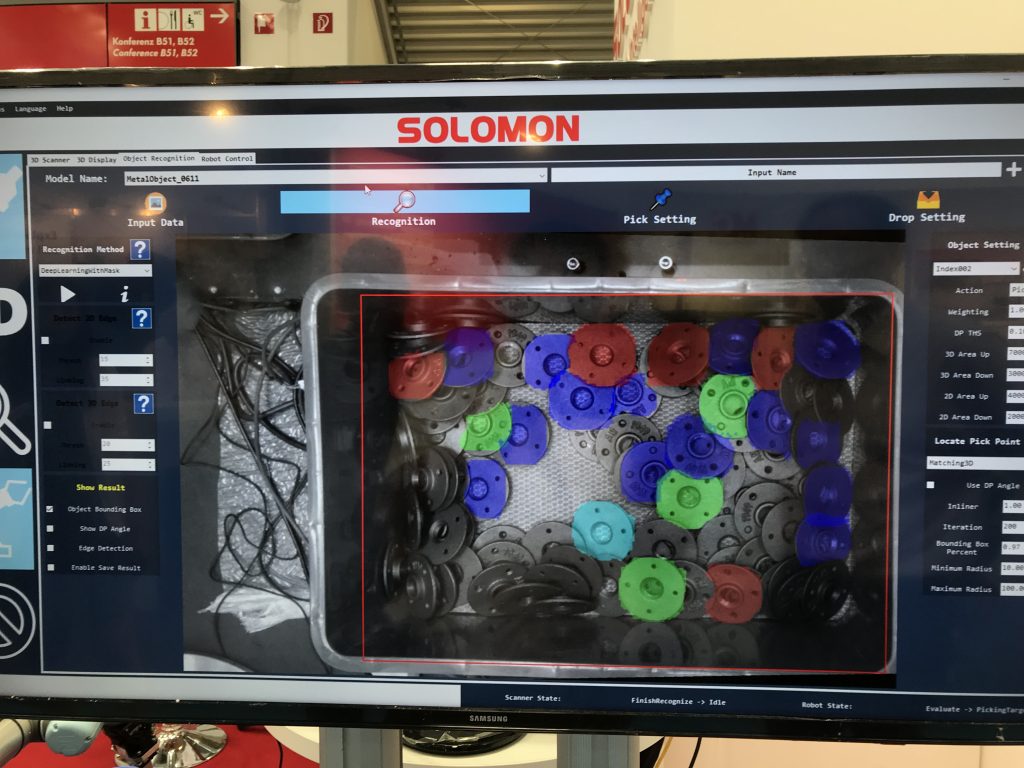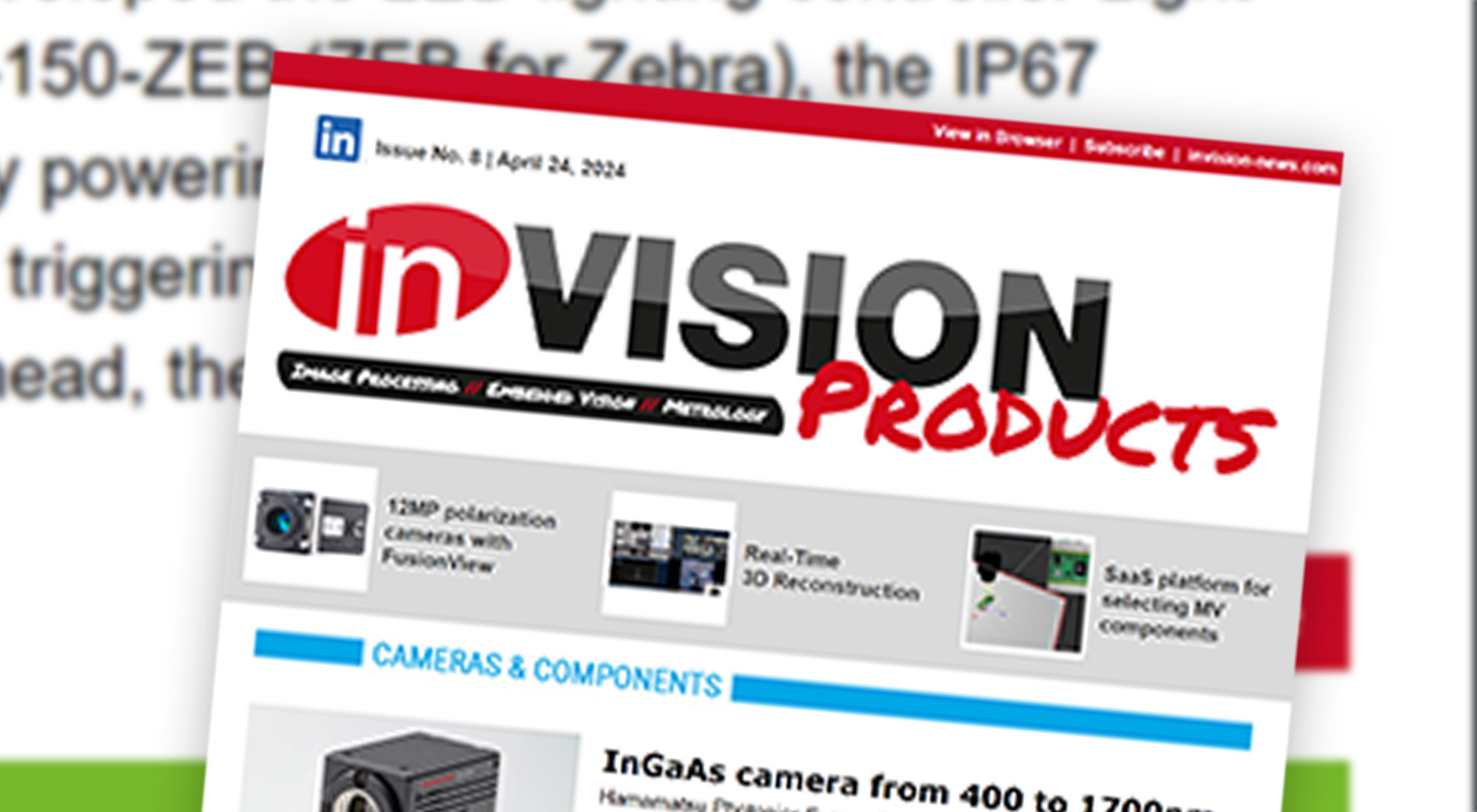AI-Based Bin Picking
Deep Learning for Intelligent Bin Picking
Robots in factories are mostly used to perform monotonous tasks, as they come without the intrinsic cognitive capabilities of human operators. That’s starting to change though with transformative technologies such as AI (artificial intelligence) and advanced 3D vision systems. By harnessing these powerful technologies the AccuPick 3D system – an AI-based machine vision solution – can enhance productivity of robots by making them more intelligent and flexible.

Figure 1 | What separates AccuPick from conventional 3D system is its ability to recognize complex shapes/objects far more effectively and efficiently by using advanced deep learning technologies. (Figure: Solomon Technology Corporation)
By seamlessly integrating an advanced scanner hardware, 3D processing software, and AI technologies, the AccuPick 3D system is able to perform bin picking with high recognition rate and ease of use. The system includes Solscan, a fast structured light color scanner (itself available as a product) that projects patterned light onto objects and gives as output a dense point cloud delineating 3D topology of objects. There are two versions of the scanner with 2.3MP and 5MP camera resolution. The field of view (FOV) ranges from 270×180 up to 1,200x800mm at working distances from 450 up to 2,000mm. Time of measurement takes 0.1~0.2sec with a 3D rate of >10Hz. What separates AccuPick from conventional 3D system is its ability to recognize complex shaped objects far more effectively and efficiently. This is possible through the use of advanced deep learning, which can also reduce up to 70% of time spent on teaching the software to recognize the workpieces regardless of their positions and orientations. Furthermore, the motion planning module of the system is specifically targeted for applications requiring robot arms to manoeuver inside of an outsized bin. The system has been successfully applied in various industries, including automotive components, electronics, food packaging, machine tending, and warehouse de-palletization. It offers far more intelligence and flexibility with its ability to recognize complex picking environment, such as picking and sorting multiple objects, or determining the right orientations of occluded workpieces. AccuPick is compatible with major robot brands, e.g.Universal Robots, Fanuc, Stäubli, Yaskawa, Kuka, ABB, and others.

Figure 2 | AccuPick 3D system – a suite of AI-based machine vision solutions – can enhance productivity of
robots by making them more intelligent and flexible.(Bild: TeDo Verlag GmbH)
3D Vision Guided Robot
In production lines, fixing a workpiece in a rather precise position is often difficult because labor placement can’t be accurate enough for a robot to perform the requisite tasks. The alternative is to design mechanical fixtures catered to each workpiece so a robot can perform the task after workpiece’s position is fixed mechanically. The disadvantages of this mechanical approach are high costs associated to design these fixtures, the lack of flexibility if a part is no longer produced, and the changeover time required in the production lines. The 3D vision guided robot solution Solmotion takes complexity out of these tasks as it recognizes unique features on a workpiece so it’s able to identify the 3D position and orientation of the workpiece even if it is placed imprecisely. All it takes is for the Solscan 3D scanner to take a snapshot of the workpiece and the software immediately matches and calculates the required routes for the robot to move along.
AI-Based Vision Inspection
Rapid progresses brought by AI are starting to change the way machine vision problems are approached. In industrial settings, defects and features with irregular patterns such as hard-to-define scratches, stains, cracks and many other types of flaws have been difficult for conventional rule-based methods to inspect, but can now be identified with far more ease using neural networks. Solvision, a AI-based machine vision software, is well suited to solve inspection problems of this nature. Like the way humans visually learn how to identify objects and features, deep learning requires no tedious writing of codes to inspect each defect type. All it takes is a sample to label the defect types for machines to learn, simplifying inspection tasks and saving significant amount of engineers‘ time to write the programs. Another advantage of Solvision is its seamless integration with different robots, six-axis or Scara, so objects inspected can be automatically separated accordingly. Solvision can also be extended to inspect objects with three dimensions by leveraging Solomon’s 3D Solscan scanner and software.












